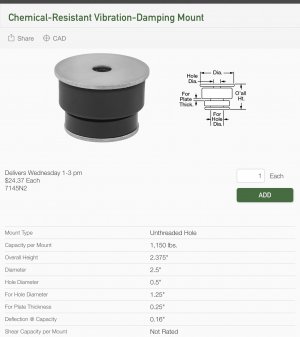A D1-5 spindle mount in a 1000lb machine is more marketing then function, a D1-4 will perform jut as well. As Mikey indicated, you might see a difference with a much heavier lathe and deeper cut, but it ain't going to happen with a 1000lb machine. The main reason for a larger spindle mount in these type of machines is to increase the spindle diameter,
I realize I'm responding to something you mentioned in 2019, but I had a mostly useless, academic thought I wanted to run by you
When I read this part of your post, I wondered just how much more rigid would the d1-5 in the g4003g be than a d1-4 in a similar class of machine.
So, the point on the spindle that would be subject to the most deflection stress should be the main spindle bearing behind the spindle, right?
I looked up the specs on 2 similar machines, with each respective spindle. The g4003g and the g4003.
The G4003g has a d1-5 spindle with a 1.57" spindle bore and, according to manual uses a 30212 (60mm Id, or 2.3622" ) bearing. That would make the spindles wall thickness @ the main bearing 0.3961"
The G4003 has a d1-4 spindle, and according to the manual has a 1.417" spindle bore. It also uses the 30212 bearing. That would make the spindle wall thickness @ the main bearing .4725".
So, regardless of the d1-5 spindle mount, the g4003g spindles OD @ the bearing boss is the same as that of the g4003 @ 60mm ( 2.3622"). But the 4003g has a significantly larger bore, and correspondingly less spindle wall thickness.
Taking that into consideration, I wonder just how much more rigid is the g4003g spindle? May even be less rigid, perhaps?
A purely academic thought, since I own neither machine.


